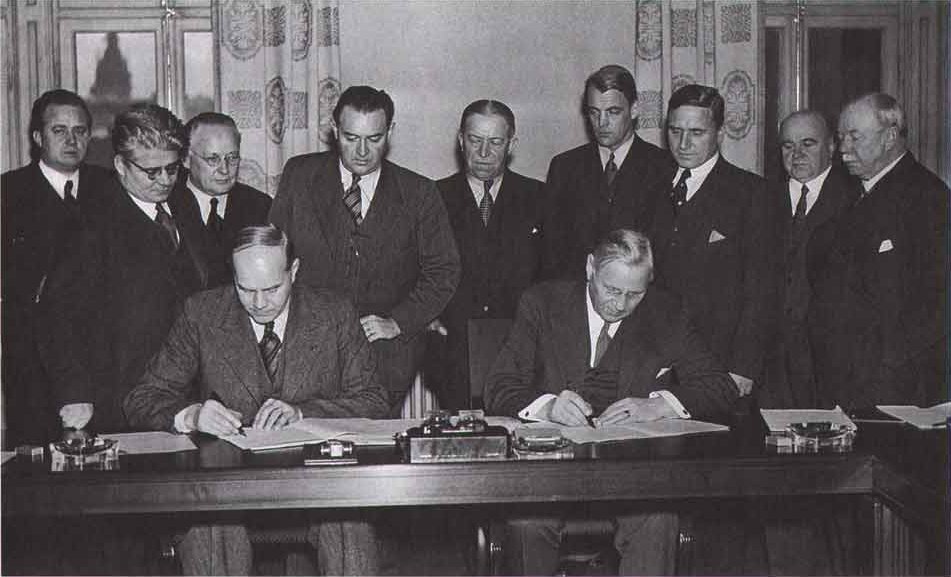Sweden’s Saltsjöbaden Agreement
The Saltsjöbaden Agreement was a very influential collective bargaining agreement between employers and employees that was reached in 1938, and a key building block to labor market relations under the long-standing social democrat rule throughout much of the 20th century. Perhaps surprisingly, it is largely based on the parties organizing themselves without much intervention from government.

The Saltsjöbaden Agreement (Saltsjöbadsavtalet) is an agreement between Sweden’s National Trade Union Federation (Landsorganisationen LO) and Swedish Confederation of Employers (Svenska Arbetsgivaresföreningen SAF, today Svenskt Näringsliv). Named after the resort town near Stockholm where nearly two years of negotiations were concluded in December 1938, it was a fundamental component of labor market relations for over half a century, defining employer, worker and third party rights. The agreement established a cooperative body, the Arbetsmarknadsnämnden, outlined grievance procedures, set limits on actions that might endanger national interests, and acted as the foundation for a system of labor market conflict resolution remarkably free of governmental interference or legislation. For decades it was central in a series of fundamental labor market agreements and functioned reasonably well. However, since the late 1960s there have been breakdowns in the system, and several new cooperative agreements have been reached, including the so-called Utvecklingsavtal in 1988. In 2007, LO and Svenkst Näringsliv entered into talks about changes to the agreement, but these were abandoned two years later.
Denmark led the Nordic countries with a similar fundamental labor market agreement that was reached in September 1899, and Norway’s labor market partners concluded one in 1935. Finland and Iceland have taken slightly different courses, in that fundament labor market laws there have come from government actions – something Sweden’s labor market partners have sought to avoid.

PICTURE: The logo of LO. Source: lo.se. Public Domain
Further reading:
- A. Martin, (1995) ‘The Swedish model: demise or reconfiguration?’ in R. Locke, T. Kochan and M. Piore eds. Employment Relations in a Changing World, Cambridge, (Cambridge, MA: MIT Press, 1995).
- Knud Knudsen, Hanne Caspersen and Vagn Oluf Nielsen, 'A Brief History of the Danish Labout Movement' in Kampen for en bedre tilværelse: arbejdernes historie i Danmark fra 1800-tallet til 1990 [The Struggle for a better life: history of workers in Denmark 1800-1990] (Copenhagen: Selskabet til forskning i Arbejderbevægelsens historie, 1991).